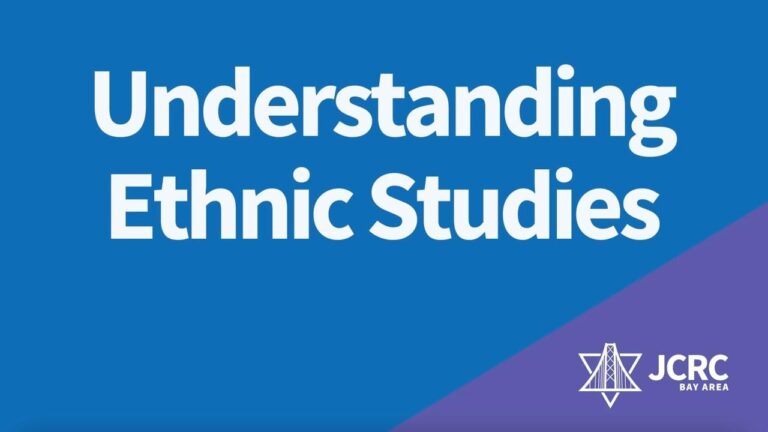How Bay Area Student Activism Sparked the Rise of Ethnic Studies
Origins of Ethnic Studies: The 1968 Bay Area Student Strike
In the spring of 1968, a groundbreaking wave of student activism swept through the San Francisco Bay Area, marking a turning point in American education. Students united under the banner of the Third World Liberation Front (TWLF), a coalition representing Black, Latinx, Asian American, and Indigenous student groups. They launched one of the longest and most significant strikes in U.S. history, demanding the creation of academic programs that reflected the histories and lived experiences of marginalized communities. This movement exposed the glaring absence of diverse perspectives in university curricula and ignited the birth of Ethnic Studies as a formal academic discipline.
The strikeŌĆÖs success led to transformative changes, including:
- The establishment of the first College of Ethnic Studies at San Francisco State University in 1969
- Curriculum reforms across CaliforniaŌĆÖs higher education institutions
- The emergence of a nationwide push for inclusive educational programs
Below is a comparative overview of how select universities evolved in their approach to Ethnic Studies before and after the 1968 strike:
| University | Status Before 1968 | Post-Strike Developments |
|---|---|---|
| San Francisco State University | No Ethnic Studies programs | Founded the first dedicated college |
| University of California, Berkeley | Limited offerings in ethnic topics | Expanded departments and majors in Ethnic Studies |
| Stanford University | Minimal inclusion of diverse perspectives | Introduced interdisciplinary ethnic studies courses |
Long-Term Impact: Advocacy and Curriculum Transformation
Over the past five decades, continuous advocacy by students, educators, and community activists in the Bay Area has profoundly influenced educational policies and curricula. Their persistent efforts have pushed for academic content that not only acknowledges but centers the stories and contributions of historically marginalized groups. This activism has fostered an educational environment that champions cultural identity, social equity, and critical thinking.
Modern ethnic studies programs often incorporate strategies such as:
- Partnerships with community organizations: These collaborations enrich course materials and provide students with real-world connections.
- Empowering student leadership: Encouraging youth to spearhead advocacy and participate in policy-making.
- Policy advocacy: Working with school boards to make ethnic studies a mandatory part of graduation requirements.
Overcoming Obstacles: The Challenges and Successes of Ethnic Studies Implementation
Despite its growing acceptance, the integration of ethnic studies into school systems has faced numerous challenges. Political opposition, concerns over curriculum content, and limited funding have all posed significant barriers. Additionally, a shortage of educators trained specifically in ethnic studies methodologies has hindered program effectiveness. Nevertheless, the movementŌĆÖs resilienceŌĆörooted in its activist originsŌĆöhas sustained momentum, with community groups and allies advocating tirelessly for its expansion.
Major challenges include:
- Legislative constraints restricting curriculum breadth
- Insufficient professional development opportunities for teachers
- Unequal distribution of resources among districts
- Polarized public attitudes affecting program acceptance
Despite these hurdles, many districts report enhanced student engagement and academic success following the introduction of ethnic studies. Efforts to diversify faculty and involve students in curriculum design have been particularly effective. The table below highlights some notable achievements in this ongoing journey:
| Achievement | Effect | Region |
|---|---|---|
| CaliforniaŌĆÖs Statewide Ethnic Studies Requirement | 85% increase in curriculum adoption | California |
| Teacher Training Initiatives | 60% improvement in educator readiness | Bay Area |
| Student-Driven Curriculum Design | Greater cultural relevance and student participation | Oakland |
Strategies to Broaden Ethnic Studies in California Schools
To cultivate a more inclusive and representative educational system, statewide initiatives must focus on diversifying curricula to reflect the multifaceted histories and contributions of all ethnic groups. This requires close collaboration among educators, students, and community leaders to develop culturally responsive materials that encourage critical engagement.
Ongoing professional development is essential to equip teachers with the cultural competence and pedagogical skills necessary for effective ethnic studies instruction across all grade levels. Furthermore, schools should invest in support systems such as ethnic studies clubs, mentorship programs, and platforms for student voices to influence policy and curriculum decisions.
| Approach | Focus | Intended Outcome |
|---|---|---|
| Curriculum Innovation | Inclusion of diverse narratives | Engaged and informed learners |
| Teacher Education | Cultural awareness and competency | Effective classroom instruction |
| Student Engagement | Mentorship and extracurricular activities | Higher retention and empowerment |
| Policy Advocacy | Amplifying student perspectives | Relevant and dynamic learning experiences |
Final Thoughts: The Enduring Influence of Bay Area Student Activism
The 1968 Third World Liberation Front strike remains a defining moment in the history of American education, underscoring the power of grassroots activism to drive systemic change. As universities and schools across the nation continue to expand ethnic studies offerings, the legacy of this movement serves as a testament to the importance of inclusive curricula that honor diverse identities and histories. Ethnic studies not only enrich academic discourse but also play a crucial role in fostering understanding, equity, and social justice in an increasingly diverse society.




